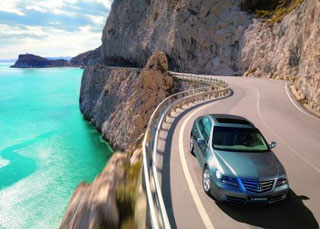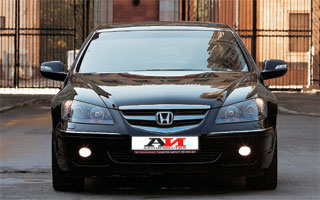Test drive Honda Legend sedan since 2006 sedan
The legend of the future
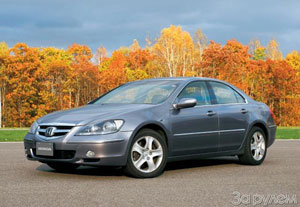 Early morning of autumn. The air is transparent and clean, huge birds soar in the sky. These are eagles. I am at Hokkaido, at the Takasa training ground, the northernmost and youngest of Honda test centers in Japan. You can’t take pictures on Takasa, you can not use a mobile phone and much more.
Early morning of autumn. The air is transparent and clean, huge birds soar in the sky. These are eagles. I am at Hokkaido, at the Takasa training ground, the northernmost and youngest of Honda test centers in Japan. You can’t take pictures on Takasa, you can not use a mobile phone and much more. The essence is forbidden
The closer it is my turn to ride, the stronger the desire to try on the move a new legend forbidden the fruit of a Japanese concern for Europeans. A year ago, it began to be sold in Japan and as a shark RL (Acura RL) in the United States. This year, a new legend promises to help with Europe, it should appear in Russia.
However, the word appears for a new legend is not very suitable. She will burst into the old world! The lines of her body are painful and dynamic. For the sake of them, you can forgive a strong resemblance to the radiator lattice of the legend with the facade of the last models of the Mazda.
The legend received a new, more powerful motor (3.5 liters, 300 hp), but the main thing is a new transmission. From now on, the flagship model of Honda is all -wheel drive.
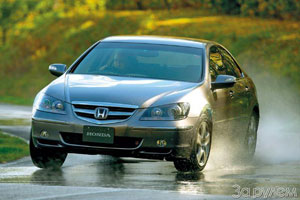 However, this all -wheel drive differs from the usual one, in which the thrust is distributed between the axes depending on the conditions of movement. In the transmission of the new legend, its factory name Super Handling All-Wheel Drive (SH-AWD) can be translated as a super-controlled all-wheel drive engineering solution that migrated from motorsport (see ZR, 2004, No. 10). Its essence is that on the rear axle, torque is also distributed between the left and right wheels. Priority to the wheel located on the external radius of rotation. Under normal conditions, up to 70% of the torque is transmitted to the front wheels. With high accelerations, up to 70% of the torque enters the rear axle to improve acceleration dynamics and simultaneously stabilizing movement. When accelerated in a bend, almost 100% torque can be transmitted to the rear outer wheel. A diametrically opposite picture occurs when gas is discharged on the bend of the road: the engine will first slow down the inner wheels.
However, this all -wheel drive differs from the usual one, in which the thrust is distributed between the axes depending on the conditions of movement. In the transmission of the new legend, its factory name Super Handling All-Wheel Drive (SH-AWD) can be translated as a super-controlled all-wheel drive engineering solution that migrated from motorsport (see ZR, 2004, No. 10). Its essence is that on the rear axle, torque is also distributed between the left and right wheels. Priority to the wheel located on the external radius of rotation. Under normal conditions, up to 70% of the torque is transmitted to the front wheels. With high accelerations, up to 70% of the torque enters the rear axle to improve acceleration dynamics and simultaneously stabilizing movement. When accelerated in a bend, almost 100% torque can be transmitted to the rear outer wheel. A diametrically opposite picture occurs when gas is discharged on the bend of the road: the engine will first slow down the inner wheels. The on -board computers receives pulses from the rotation sensors of the steering wheel, lateral acceleration, rotation speed of the wheels, processes the information and gives the control signal to electromagnetic clutches located in the rear differential unit.
The sweetness is forbidden
In the driver's seat is conveniently located, but a tall tunnel in the middle of the salon limits a sense of freedom.
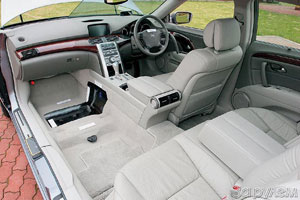 Try, reach the glove box. Managed to open? Wonderful. But you cannot get something from the depths without dexterity. However, maybe so the driver should not be distracted from the road under any pretext: fasten and go! Along the way, enjoy expensive finishes: genuine leather, wood, aluminum. And only one question does not give rest: what did the creators on sports or on the solidity of the most expensive of the Honda sedans want to emphasize? It seems that they managed to equally fulfill both the task.
Try, reach the glove box. Managed to open? Wonderful. But you cannot get something from the depths without dexterity. However, maybe so the driver should not be distracted from the road under any pretext: fasten and go! Along the way, enjoy expensive finishes: genuine leather, wood, aluminum. And only one question does not give rest: what did the creators on sports or on the solidity of the most expensive of the Honda sedans want to emphasize? It seems that they managed to equally fulfill both the task. The legend is very frisky: from the start, it overcomes a mark of 100 km/h in eight with a little seconds. At a speed of 200 km/h, the car is very confident, its behavior does not inspire the driver with the slightest concern.
At the high -speed oval of the landfill, a cunning transmission does not show itself. On the instrument panel, symbols of complete calm and dominance of the front -wheel drive are displayed. A completely different matter is on a winding area with wet asphalt: here the riding gives true pleasure. The new legend system seems to enter the fight against the laws of physics. The super -controlled drive stubbornly forces the car to follow the sophisticated bends of the road laid among the golden groves of birches, painfully reminiscent of Moscow. Left-right, left-right alternate turns. I hardly have time to mark on the display, as the initiative passes from one wheel to another.
The super -controlled four -wheel drive on the legend is the opposite of the known ESP. Both systems solve the same problem to keep the car on a given path. Only their methods are different. ESP slows the wheels and forcibly reduces engine speed. And the super -controlled drive, on the contrary, increases the thrust on the right wheel, allowing you to pass the turns faster.
Electronic extensions
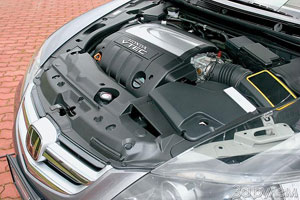 A few more electronic things in the new legend deserve, in my opinion, special attention. First of all, this is an assistant for saving the Lane Keeping Assist (LKAS) and adaptive cruise control of Adaptive Cruise Control (ACC). In the first device, the mini-video chamber in the upper part of the windshield identifies the strip and will serve corrective commands to the steering wheel. In the second radar, working in a millimeter range that is hidden behind the radiator grill, will make the car move at a given speed. Unlike the usual cruise control, it will slow down the car if another vehicle has arisen ahead and retains a safe distance up to a complete stop.
A few more electronic things in the new legend deserve, in my opinion, special attention. First of all, this is an assistant for saving the Lane Keeping Assist (LKAS) and adaptive cruise control of Adaptive Cruise Control (ACC). In the first device, the mini-video chamber in the upper part of the windshield identifies the strip and will serve corrective commands to the steering wheel. In the second radar, working in a millimeter range that is hidden behind the radiator grill, will make the car move at a given speed. Unlike the usual cruise control, it will slow down the car if another vehicle has arisen ahead and retains a safe distance up to a complete stop. To read about the miracles of technology is one thing, but when you throw a steering wheel at a bend, and the car, as if nothing had happened, write out the arc and even slow down before the obstacle is too much. However, Japanese engineers do not think so.
These electronic systems, explains their chief shin -drying of Ishid, forgive the driver’s mistake, but they do not replace it in any way. For example, the driver was distracted to light, or looked aside from where the roar rang out, the car insured him.
For success in Europe, a new legend needs a tougher suspension. All other trump cards are in her arms.
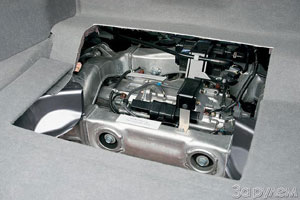 The next step towards an even safer legend system for mitigating the consequences of the accident (Collision Mitigation System). The principle of operation is understandable from the above table. And I was not offered to test the effectiveness on myself yes, to admit, there was no particular desire.
The next step towards an even safer legend system for mitigating the consequences of the accident (Collision Mitigation System). The principle of operation is understandable from the above table. And I was not offered to test the effectiveness on myself yes, to admit, there was no particular desire. Noise noise
The time of acquaintance with the new legend has expired. Orlanes are slowly circling in the silent sky, in the rays of the sun, the forest plays with paints. Yes, only now I understand how quiet it was in the cabin. But this silence was guarded by the car itself: he protected passengers from the noise of the wheels, from the whistle of the wind outside the windows, suppressed the rumble of the engine and the broken exhaust gases. For the sake of maintaining a calm atmosphere, many sensors worked in the cabin, annoying noises were caught beyond it and the signals opposite the phase were sent through the audio system to drown out their source.
Before my eyes, a halo of mystery around a new legend melted. The most incredible things found a completely earthly explanation. Now, in order to become legendary again, she will have to prove her superiority to competitors on European and Russian roads.
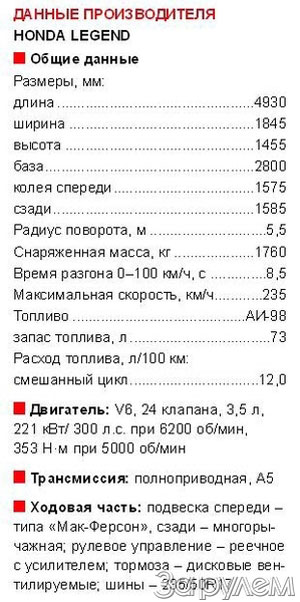
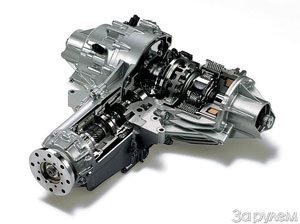
Vladimir Solovyov
A source: The magazine "Driving"
Honda Legend Crash Test Video since 2006
Honda Legend Sedan test drive since 2006
Honda Legend Sedan Crash Test since 2006
Krassh Test: Detailed Information33%
Driver and passengers
22%
Pedestrians
40%
Children-passengers







